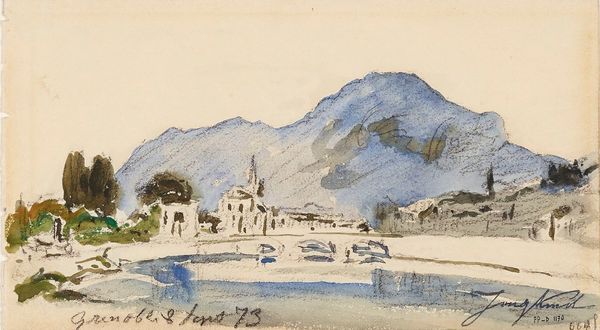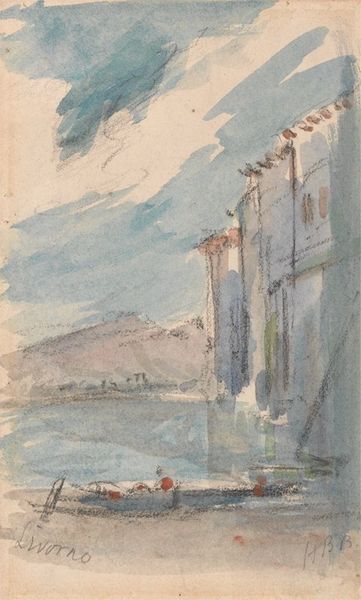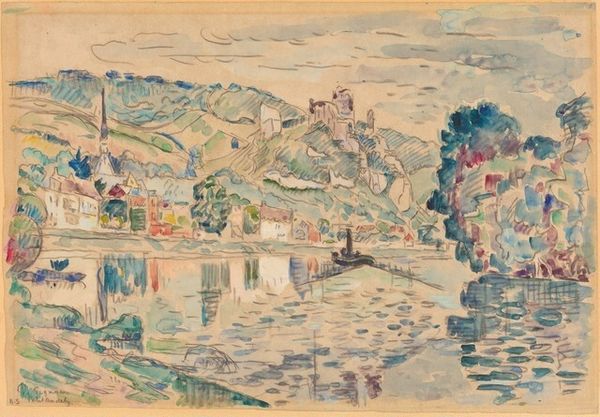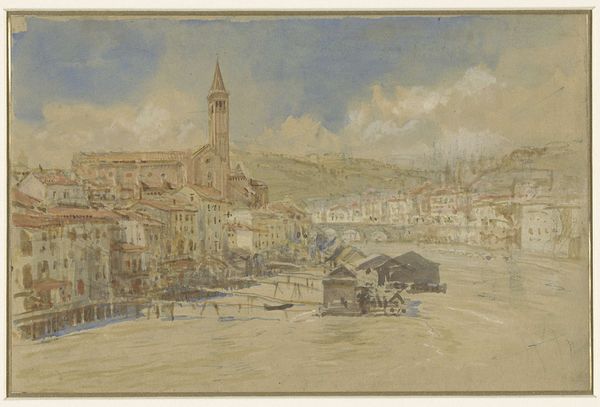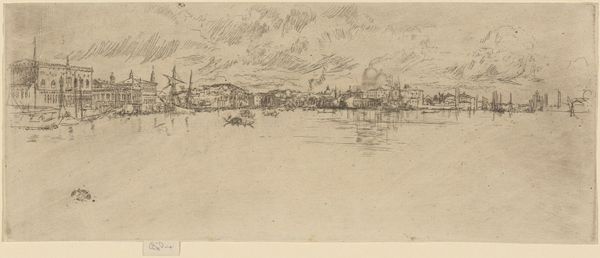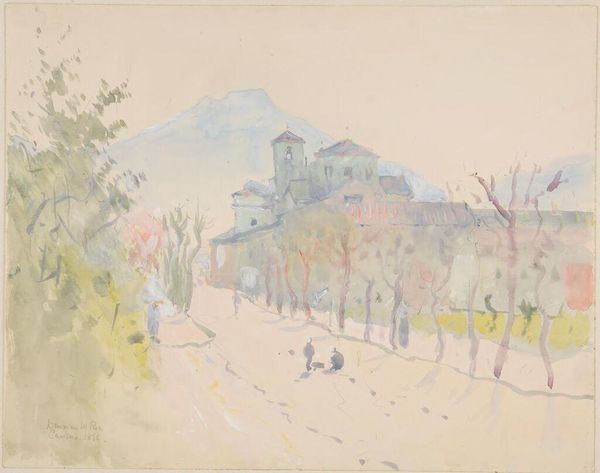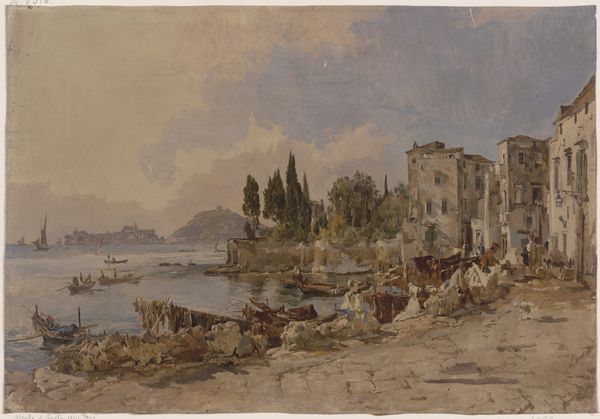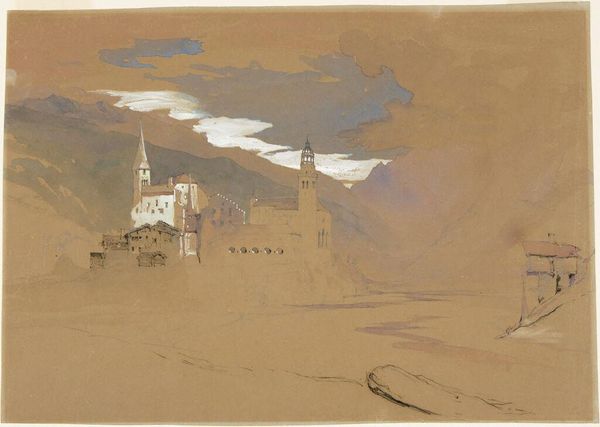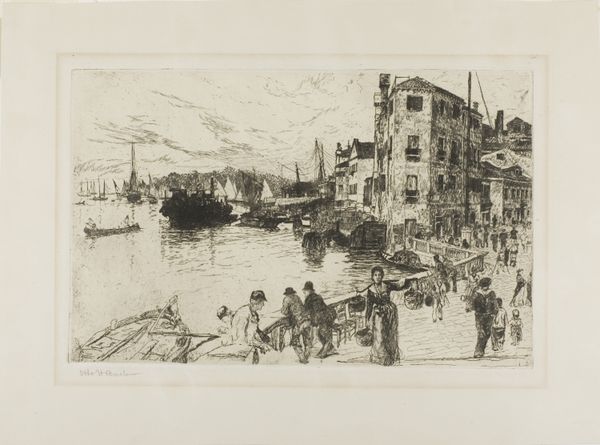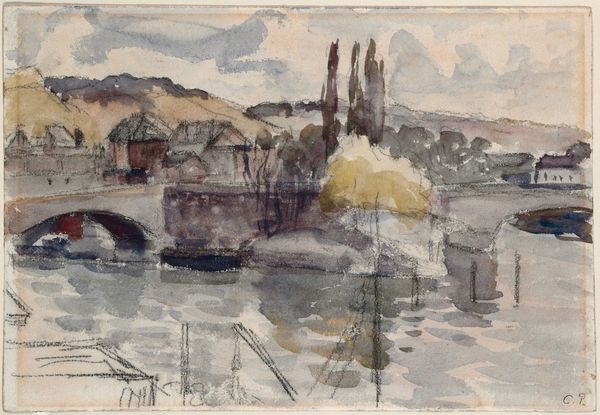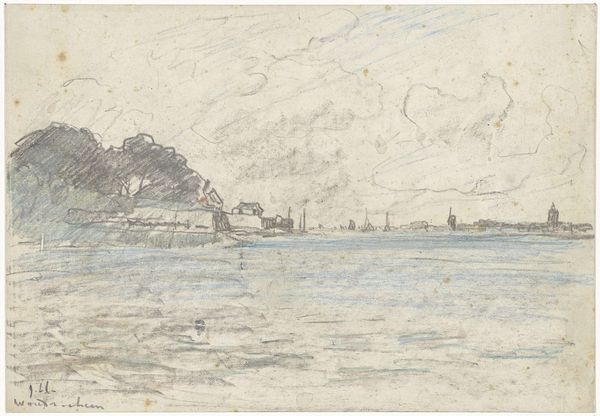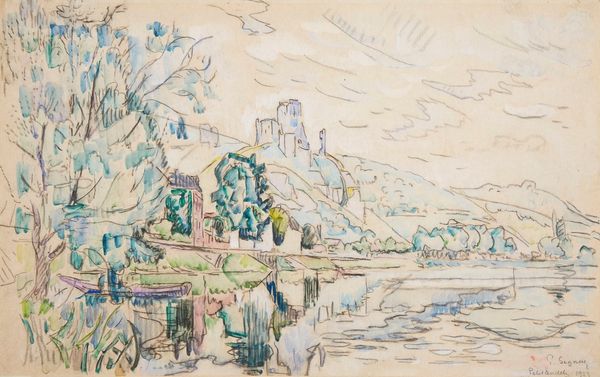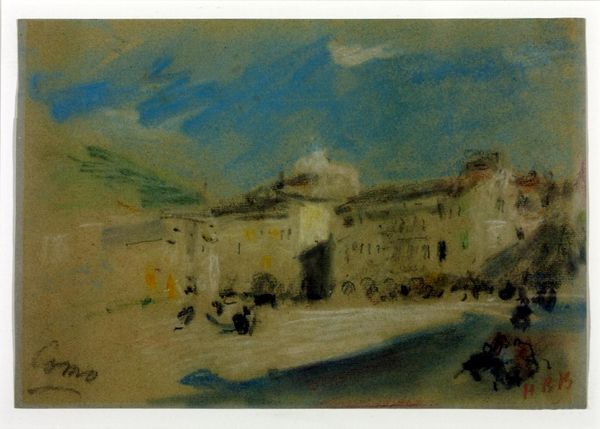
coloured-pencil, plein-air, watercolor
#
coloured-pencil
#
16_19th-century
#
impressionism
#
plein-air
#
landscape
#
watercolor
#
coloured pencil
Copyright: Public Domain: Artvee
Curator: Looking at this watercolour and coloured pencil drawing from 1883, "Grenoble" by Johan Barthold Jongkind, I am immediately struck by its contemplative, almost wistful atmosphere. Editor: Yes, a calmness radiates, yet it's also a very quickly rendered scene, perhaps on site. The thin washes and pencil work show the artist working economically. One can see the textured laid paper coming through. It reminds me of the rise of commercially-made sketching blocks and art supplies for leisure, how a landscape like this one could be quickly captured as a memory by middle-class consumers. Curator: That’s fascinating! And the scene Jongkind is depicting features certain visual anchors that consistently appear in landscape art to evoke particular emotions. The river symbolizes the passage of time. Notice how it flows towards the distance. The bridge, an emblem of connection... perhaps signifying the link between man and nature. And then there's the distant mountain, so often representative of endurance, and permanence. Editor: Good point. I think seeing how this sketch was likely made—en plein air, or “in open air”—helps connect to its symbolism as well. Jongkind was probably part of a burgeoning art market that fueled the accessibility of painting nature—and what it stood for—through accessible tools and quick methods like sketching. His role is both documentarian and symbol-maker through material choice. Curator: Absolutely! The fleeting nature of the impressionistic style perfectly captures the fleeting quality of a moment, doesn't it? The colors themselves reinforce this idea – soft blues, gentle browns, evoking a sense of serenity and perhaps even melancholy. I detect a hint of nostalgia, looking back at a peaceful landscape untouched by the growing industrialisation of the time. Editor: Perhaps even manufactured nostalgia, packaged and primed for purchase as an aesthetic ideal and portable good. What strikes me looking again is how much raw paper remains visible. It's unfinished but so artful in that openness! That glimpse into the artist’s labor really draws the eye toward the art-making process itself as part of the artwork's symbolic message. Curator: A fascinating contrast there between a read of the scene's iconography and the actual facture of the work, each interpretation deepening our insight into Jongkind's Grenoble. Editor: Precisely. A potent convergence of representation and material fact.
Comments
No comments
Be the first to comment and join the conversation on the ultimate creative platform.
